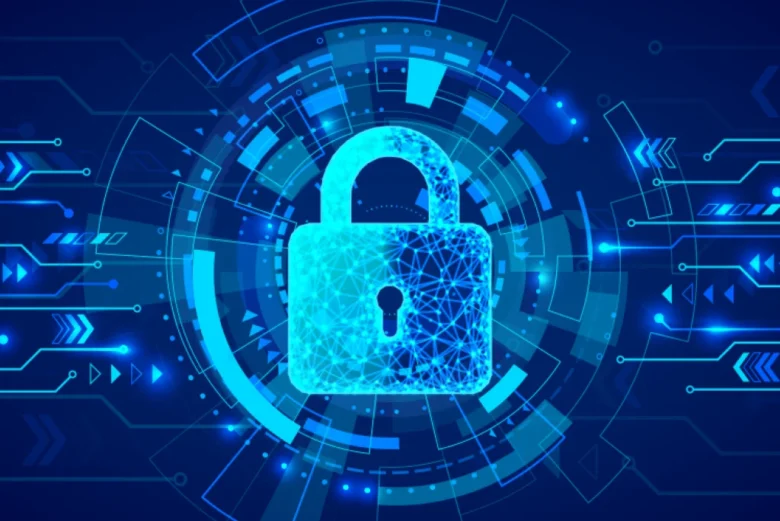Cybersecurity is a problem that nobody wants to talk about. It’s important, however, because the risk is real. While many enterprises are already taking steps to protect themselves from this silent threat, there are still plenty of others who find themselves victimized by cyber-attacks.
The growth in cybercrime results from a growing number of online criminals looking for easy and profitable targets. Identity theft poses a danger to everybody these days. Small business owners, regular employees, and even the top brass at some of the biggest companies around are vulnerable to hackers stealing their identities.
You might wonder, “How can we defend ourselves from something that no one wants to talk about?” The answer: Start being proactive by taking steps to protect yourself, your organization, and its members. These things will go a long way to defending your data or confidential information:
Top 5 Ways to Prevent a Cybersecurity Attack
1. Determine Your Risks

The first step towards protecting yourself against cybercrime is to understand the risk. Assess the risk posed by your network and the risks that come with it. What are the threats? Which are too serious to ignore? The point of this first step is to give you a handle on what you need to protect yourself from. The second step is to understand what you have to protect. It means knowing the value of your data.
2. Educating employees on not opening suspicious emails

Educated employees are more likely to know and understand when a cyberattack is trying to infiltrate your server. They’re also more likely to refuse an invitation to click on a link that could compromise their computers or the network. Ensure you have an information security policy in place and make sure everyone has read and understood it.
An example of a good information security policy should outline what all your employees can and cannot do online, how they can and cannot protect their devices, and what they need to do if they suspect something is afoot.
3. Utilize security controls
We’ve all heard of antivirus software, firewalls, and IDS, but this step is about more than just installing these programs on your computers. You need to install an in-depth set of security controls that helps protect your network against external threats.
It means a complete system of multi-factor authentication that can keep hackers out. It also includes encryption for both back-ups and data at rest or in transit. It means encrypting the data at rest, encrypting the data in transit, and encrypting the backup you keep of the data.
4. Secure your network

You’ll need to implement hardening for your servers and applications. Sure, these aren’t the same things, but they work in conjunction with each other. The security controls that you utilize should be intense and include different measures such as disabling unnecessary services, terminating all protocols not relevant to your business, enabling logging of all connections between servers, and filtering outbound traffic using a proxy or inbound filters on firewalls.
You’ll also want to activate intrusion detection systems that monitor activity on the network for signs of intrusion and pop-up alerts as soon as something suspicious is detected. Consider implementing a set of security policies that govern acceptable use in the organization.
5. Implement a patch strategy

Many different types of vulnerabilities can affect your computer and systems when it comes to network security. Some are built into operating systems or applications, while others come from pre-existing bugs in the codebase.
The best defense against cyber attacks is to stay on top of patching. It means keeping up with all updates, small and large, for your hardware and software. It’s a good idea to automate this process as much as possible so that it doesn’t take up more of your time doing other tasks.
What happens during a cyber-attack?

The term cyberattack refers to any incident in which a negative impact is caused by computer technology. It may include intentional acts, such as a bank robbery by an Online Criminal, or unintentional acts, like when your customer records are breached due to a fault in your systems.
Different types of threat actors can perpetuate a cyberattack:
Threat actors vary in their way of attack and purpose, for instance, and terrorists are likely to cause physical damage and cyber damage.
One of the most common, feasible, and effective methods is a Denial-of-Service attack. In this case, a network or web server is flooded with bogus requests, often sent from multiple systems. One can serve real users. It impacts the availability of the target, which can be either information you can’t access some website or you can’t use your ATM card.
Another common attack is the use of malware. It’s a virus or trojan that takes control over your system, encrypting the data and preventing you from accessing it.
A third and more complex form of attack is Social Engineering. The attacker gives a false sense of security by pretending to be a trustworthy business partner. And, by getting the user to share personal information via email or social networks, they can access a lot of data. It can lead to identity theft, malware, and the fraud of sensitive information.
Security Controls
It’s important to note that security controls are available to protect an organization against these threats. They include:
-
Information Security Policy:

A company policy outlining how organizations handle and disclose security vulnerabilities and other threats. Company policies must be current with the latest industry standards.
Company policies must be current with the latest industry standards.
-
Intrusion Detection Systems:
Systems that monitor traffic patterns, unauthorized access to data, and the like to detect a cyber attack. IDS can act as a deterrent by detecting attack activity before it is initiated.
Systems that monitor traffic patterns, unauthorized access to data, and the like to detect a cyberattack are in progress. IDS can act as a deterrent by detecting attack activity before it is initiated.
-
Patch Management:

It is especially important for operating systems, applications, and browser plug-ins.
It keeps software up-to-date with the latest security patches, hotfixes, and service packs. It is especially important for operating systems, applications, and browser plug-ins.
-
Database Security:
Database security goes beyond data storage and protects your data while it is being stored, accessed, transmitted, and disposed of. If a breach occurs, database security also ensures that the attacker cannot use or modify the information as they see fit.
Conclusion
In a world that requires technology to do business and stay connected, it’s important to have a plan to protect yourself from cyber threats. The above steps should give you the basics to get started with protecting your network. If any of the above steps aren’t possible, don’t be afraid to ask for help from professionals like MyTek who know how to implement them effectively.


